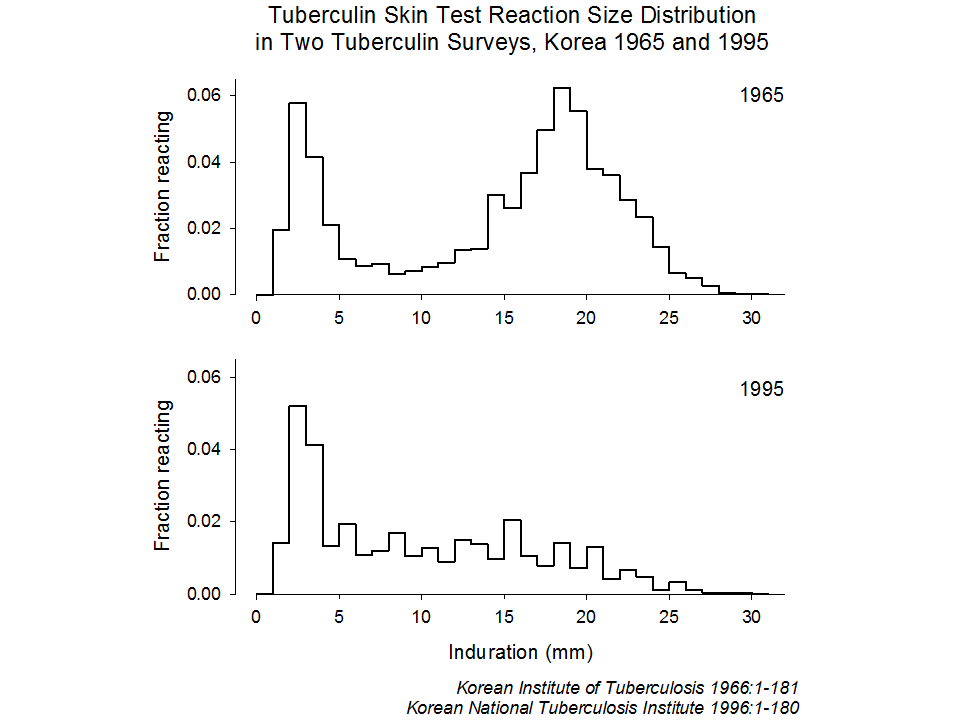 |
|
| |
|
|
| Slide |
034 |
Epidemiologic Basis of Tuberculosis Control |
 |
Next |
 |
 |
Previous |
 |
First |
 |
Last |
Seven large tuberculin skin test surveys were conducted at 5-year intervals in Korea between 1965 and 1995. Those reacting with zero millimeter induration have been excluded from graphic display of the frequency distribution of tuberculin skin test reaction sizes.
In 1965, a very clear bimodal distribution is seen with a first peak at 2 to 3 mm and a second at 18 mm. The right distribution closely resembles the distribution seen in tuberculosis patients. Very few persons have reaction sizes between 6 and 11 mm. Thus, any cut-off point to denote the presence of tuberculous infection in this range will be reasonably accurate. If for instance a cut-off point of 8 mm is chosen, the error made by including some individuals with 8 or 9 mm who have actually no tuberculous infection will be very small.
In 1995, the situation is very different. Quite obviously, the prevalence of infection has remarkably decreased. The determination of a proper cut-off point has become more difficult and misclassifications result now in a much greater error.
Thus, depending on the magnitude of the prevalence of tuberculous infection, the errors of misclassification will be smaller (high prevalence) or larger (low prevalence) in this particular setting. |
| |
|
Go to top
Last update:
September 10, 2010